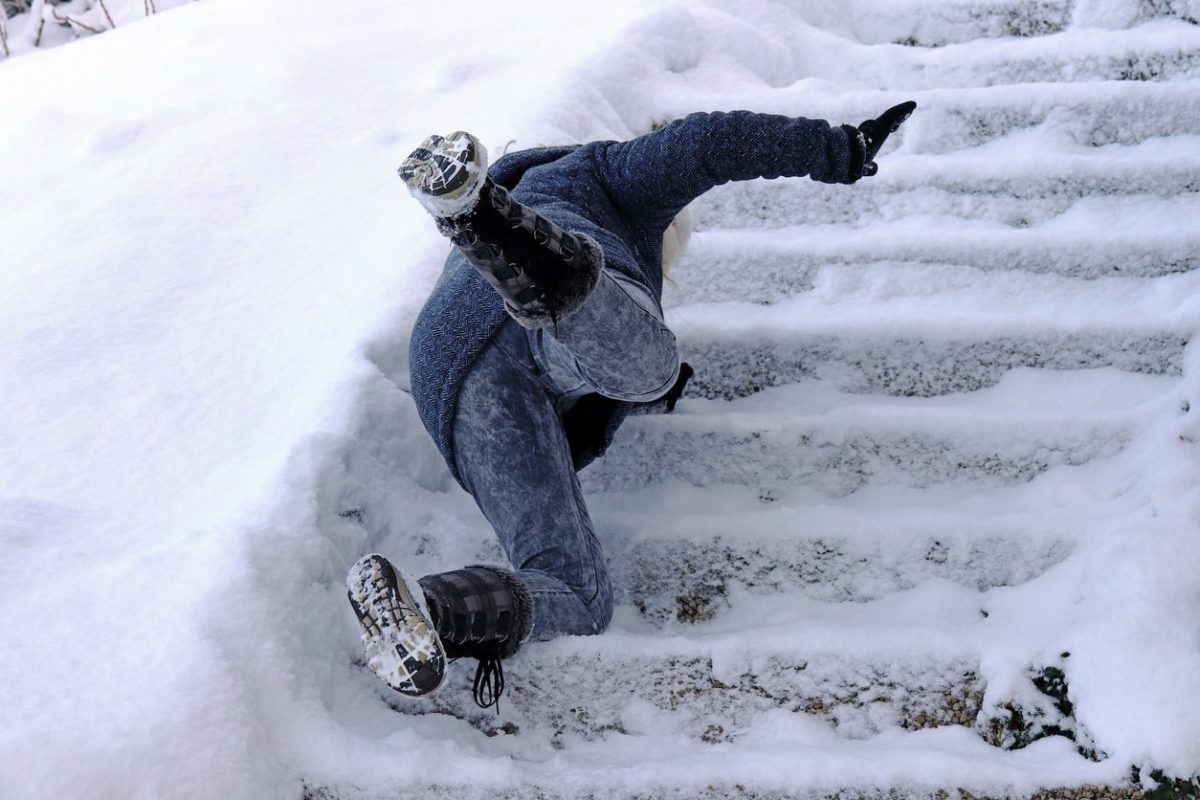
Wintertime brings about hazards of which employers must be aware, particularly if they have outdoor workers. With proper preparation and consistent attention, both employers and employees can prevent these injuries. One of the most effective prevention techniques is upholding the concept that safety is an area of responsibility for everyone in the business. Initiate and reinforce safety protocols that clearly spell out safety responsibilities and expectations.
Slips, Trips and Falls
Winter ice and snow create a more hazardous environment that increases the risk of worker injuries. A proactive safety plan that specifically addresses slips, trips and falls not only enhances worker safety but also minimizes potential costs from workers’ compensation payments, government fines or equipment/facility remediation requirements.
An active effort must be made to prevent ice build-up on walkways, de-icing walkways and clearing walkways. The parking lot needs to be addressed! Many winter weather related falls occur when someone is transitioning in and out of their car or walking toward a cleared sidewalk. There should be eyes on the parking areas, outside break areas and walkways at all times.
Frostbite and Hypothermia
Frostbite and hypothermia can occur in extreme cold exposure, and both can have long-lasting effects. It is important to know the symptoms and seek proper medical care immediately if these are experienced.
Hypothermia:
- Shivering or shaking
- Lack of coordination
- Drowsiness or confusion
- Slurred speech
Frostbite:
- Very cold, numb skin (possibly hard and pale)
- Blisters or swelling
- Joint or muscle stiffness
Protect Your Business
Always encourage active participation and input from employees. General guidelines include these standard safety precautions:
- Identify potential slip, trip and fall hazards in your workplace: Review incident records, inspect locations and consider the impact of changing environmental conditions.
- Evaluate the potential risk of each hazard: Number of employees who could be affected, the potential frequency of risk and impact of the surrounding area.
- Determine controls that can be instituted to reduce hazards: Relocating or removing dangerous environmental factors, limiting accessibility to higher-risk areas and providing appropriate footwear or personal protective equipment.
- Regularly review the work environment: Maintain regular housekeeping, ensure good lighting and keep equipment in proper working condition.
- Maintain records of all incidents and continually review and improve the work environment and safety initiatives: Encourage employees to report safety concerns and implement changes when needed.
Creating an environment where employees are comfortable enough to share responsibility of your safety plan may take time. The most vital component to building that trust is communication. Effective communication will actively seek upward feedback and input from employees to better understand and improve safety and health programs.
When leaders take the time to listen to their workers’ perspectives and insights, it promotes a respectful environment with safety as a fundamental value.
About Sine Insurance
At Sine Insurance Group, we are dedicated to providing you with custom tailored insurance policies to protect your assets. Our comprehensive packages have been expertly crafted to serve St. Louis and the surrounding areas for the past 25 years. For more information about our products, contact us today at (636) 947-1177.

